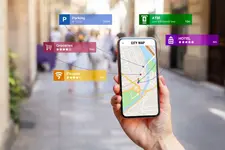
Table of contents
In today’s world, the Importance of Interactive Content for Modern Marketers cannot be overstated. People have shorter attention spans and there is a lot of competition for people’s attention. Marketers are always looking for new ways to stand out and get people interested in their products or services.
One way that marketers are doing this is by using interactive content. Interactive content is content that allows people to interact with it in some way. This could be by clicking on things, answering questions, or playing games.
Interactive content is important for marketers because it is more engaging than traditional content. People are more likely to pay attention to and remember interactive content than they are to traditional content.
Interactive content can be used to educate people, entertain them, or help them make decisions. It is a powerful tool that can help marketers reach their target audience and achieve their goals.
According to new marketing trends, the industry of content marketing is
expected to grow a lot in the next few years
. This growth is because of the importance of interactivity in marketing.
In this article, we will talk about the benefits of interactive content. Interactive content can make people pay attention to your brand, make people buy your products, and make it easier to explain complicated things.
By understanding how interactivity works, marketers can find new ways to be successful in the digital world.
What is the difference between interactive and static content?

Static content is like a book or a picture. You can only look at it, not interact with it. It’s like watching a movie without being able to change the story. You can’t click on anything or make choices that affect what happens next. Everything is fixed and doesn’t change based on what you do.
Interactive content is like a video game or a survey. You can play with it and make choices that affect what happens next. You can click on things, answer questions, or even create something of your own. Interactive content lets you be an active participant and affects what happens next. It’s like having a conversation or playing a game where your actions make a difference.
Interactive Content in Marketing
Interactive content marketing is a way for marketers to talk to their audience in a more personal and fun way. It is different from regular content because it asks people to participate and share their thoughts. Marketers can learn a lot about their audience by reading their responses.
With interactive content, marketers can create special experiences for people that make them feel important. They can show off their products and services in a fun way, like with polls or videos. This helps people understand and appreciate what is being offered.

Interactivity makes stories better by using visuals and interactive elements to make complicated information easier to understand. Marketers can also use user interactions to improve their strategies and make their sales and marketing efforts better.
In conclusion, interactive content helps marketers connect with their audience and make their messages more engaging and memorable.
Benefits of Interactivity in Marketing
Marketers are always looking for new ways to get people’s attention and keep them interested. Interactivity is one of the most important tools in their toolbox, and it has a lot of benefits that traditional, non-interactive content doesn’t have. Here are a few of them:
1. Enhanced audience engagement and personalization
Interactive content goes beyond passive consumption and actively involves the audience, resulting in greater engagement levels. By providing opportunities for interaction,
marketers can capture the attention of their target audience
This higher engagement rate allows for personalization, as users’ responses and preferences can be used to deliver tailored content experiences.
For example, a skincare brand can
create an interactive set of questions
to help users determine their skin type and recommend personalized product recommendations based on their answers.
2. Increased brand visibility and awareness
In a competitive digital landscape, standing out is crucial for brand success. Interactivity offers a refreshing and engaging approach that captures users’ attention and differentiates a brand from its competitors .
When users have an enjoyable and interactive experience with a brand’s content, they are more likely to share it with others on social media platforms, expanding the brand’s reach organically.
For instance, an interactive game that educates users about a brand’s mission or product features can generate buzz and increase brand visibility.
3. Improved lead generation and conversion rates
Interactivity is a powerful tool for getting people’s contact information and making them more likely to buy your products. By giving people a chance to interact with your content, you can collect information like their email addresses, what they like and dislike, and what they think of your products.
This information can then be used to personalize your marketing campaigns and make sure that your products are appealing to the right people. For example, a furniture store could create an interactive room design tool that lets people customize and visualize their ideal living space. In exchange for using the tool, people would be prompted to provide their email addresses, which the store could then use to send them follow-up marketing materials.
4. Simplified communication of complex information
Communicating complex information can be hard, but interactivity can help. Marketers can use interactive elements to make complex concepts easier to understand and remember. For example, a healthcare organization could create an interactive infographic that shows how a medical procedure works. This would help patients understand the procedure and make informed decisions.
Interactivity can also help marketers engage their audience, increase brand awareness, and boost sales. When people interact with content, they are more likely to remember it and share it with others. This can help businesses reach a wider audience and generate more leads.
Overall, the importance of interactive content for modern marketers is its usefulness as a powerful tool that can help marketers communicate complex information effectively and achieve their business goals.
Examples of interactive elements in marketing
There are several interactive content examples used in digital marketing that engage and captivate audiences. Let’s explore a few:
1. Quizzes

Interactive elements such as quizzes, are things that people can do on a website or app that make it more interesting and engaging. They can be used to teach people about a topic or product or to entertain them.
For example, a clothing retailer could create an online questionnaire called “What’s Your Fashion Style?”. This questionnaire would ask people questions about their favourite colours, patterns, and fabrics. It would also ask them about their lifestyle and what kind of clothes they usually wear. Based on the answers, the questionnaire would generate a personalized style profile for each person. This profile would recommend specific outfits from the new collection that would match the person’s style.
This experience would be both entertaining and engaging, in addition to being a lead magnet because users would be encouraged to provide their email addresses in order to be provided with their personalized offers and exclusive discounts.
2. Polls

Polls are a way for marketers to get their audience involved in decision-making and to gather valuable insights. Marketers can create polls to ask their audience for their opinions, get their feedback, and to generate content from them.
For example, a beverage company could create a poll on their website to ask the audience which flavour of the company’s new drink the users would like to see. This would allow the audience to feel involved in the decision-making process and would give the company valuable feedback about what flavours their customers like. The results of the poll could then be shared with the audience, which would create a sense of community and transparency.
3. Games

Games are a fun and interactive way to promote brands and teach people. Marketers can make games that match their brand values and goals, giving people a fun and exciting experience.
For example, a clothing store could make a virtual styling game on their website or app. People could play the game by picking different clothes, accessories, and hairstyles to make stylish outfits for different events. They could then share their creations on social media or compete with friends to show off their fashion sense. This game would entertain people and promote the brand’s products, encouraging them to explore different clothing options for purchase.
Games can also be used to teach people about complex topics in a fun and interactive way. For example, a financial institution could make a game that simulates real-life financial decision-making. Players would navigate scenarios and make choices about budgeting, investing, and saving, gaining practical knowledge while having fun. This type of game can help demystify financial concepts and promote financial literacy among the target audience.
4. Interactive videos

Interactive videos are a type of video that lets viewers do more than just watch. They can click on things, make choices, and even play games. This makes the videos more engaging and interactive, and it helps viewers learn more.
For example, a travel agency could create an interactive video about a popular destination. Viewers could click on different hotspots in the video to learn more about specific attractions, hotels, or activities. They could also make choices throughout the video, such as choosing which adventure activities to do or which restaurants to eat at. This would give viewers a personalized and interactive experience, and it would help them learn more about the destination.
Interactive videos can also be used for training. For example, a company could create an interactive training video where employees could make decisions and solve workplace scenarios. This would help employees learn how to handle different situations, and it would make the training more engaging.
5. Augmented reality (AR)

Augmented reality (AR) is a technology that puts digital images on top of the real world. This makes it seem like the digital images are actually there. AR can be used to make shopping more fun and interactive.
For example, a furniture store could use AR to let customers see how different furniture would look in their homes. The customer would point their phone at a room in their house, and the store’s app would show them how different furniture would look in that space. The customer could even move the furniture around and change the colours to see what looks best.
AR is also being used in the beauty industry. Some makeup companies have apps that let customers try on different makeup products virtually. The app uses facial tracking technology to show the customer how different shades of lipstick, eyeshadow, or foundation would look on their face. This lets customers see how the products would look before they buy them, which can help them choose the right products for their skin tone and preferences.
AR is a new technology, but it is already being used in many different ways. It is likely that AR will become even more popular in the future, as it offers a unique and immersive way to interact with the world around us.
6. Interactive Contests and Giveaways

An interactive contest or giveaway is a fun way to get people involved with your brand on social media. For example, a travel company could run a photo contest where people share their best travel photos using a specific hashtag and tagging the company’s account. To make it more interactive, the company could ask people to share a brief story or description with their photos.
The company could feature some of the best entries throughout the contest period, which would create a sense of competition and encourage people to engage with the brand and each other. The contest could also include a voting component, where people could vote for their favourite entries.
To incentivize participation, the travel company could offer enticing prizes, such as a free trip, travel vouchers, or exclusive discounts. By incorporating interactivity, the contest not only generates user-generated content but also encourages people to actively promote their entries and engage with the brand’s social media channels. This increases brand visibility, attracts new followers, and generates excitement and anticipation among participants and their networks.
7. Interactive Infographics

This interactive feature allows users to interact with different elements, such as charts, graphs, maps, and timelines. They can get more information by hovering over data points, clicking on sections, or even customizing the content to fit their needs. This interactive experience makes the information easier to understand, more interesting, and easier to remember.
8. Calculators

Calculators are a way to get users involved and teach them about a specific topic or product. They give users a personalized and engaging experience by allowing them to enter specific information and receive customized results or insights. These calculators can be used in many industries to make complex calculations simpler and help users make informed decisions.
For example, let’s say a fitness brand offers an interactive calculator to help users figure out their daily calorie intake based on factors like age, weight, height, and activity level. Users would enter their information into the calculator, and it would produce a personalized calorie recommendation for them. This interactive tool not only provides valuable information, but it also gets users involved in understanding their nutritional needs.
9. Interactive webinars

Interactive webinars are a popular way to teach people things online. They are different from regular webinars because they let people talk to the presenter and each other. This makes the webinar more fun and interesting.
For example, a marketing agency might hold an interactive webinar about sales strategies. During the webinar, people could ask questions in the chat or in a Q&A session. They could also share their own ideas and thoughts.
The presenter might also ask people questions or give them polls to take. This helps the presenter learn what people are thinking and makes the webinar more interactive.
Interactive webinars are a great way to learn new things and meet new people. They are also a good way to share your own ideas and knowledge.
10. Interactive E-books

Interactive e-books are changing the way people read. They may include interactive polls, videos, animations, clickable images, audio clips, and more. Readers can navigate through the content at their own pace, explore additional information, and actively participate in the learning process.
For example, an interactive ebook on cooking could include interactive recipe cards that let readers customize ingredient quantities or adjust serving sizes. It could also include step-by-step videos demonstrating cooking techniques, quizzes to test knowledge, and interactive glossaries for quick access to definitions.
This interactivity makes the content more engaging and helps readers learn better. It also allows marketers to collect data about how users interact with the content, which can be used to improve future marketing campaigns.
Why is Interactive Content Important?
1. Rise in Content Expectations
Users want more interesting and helpful content every year. This is why the information-based marketing industry is growing so fast. By 2027, it will be worth almost 584.02 billion!
To keep up with these rising expectations, businesses need to make sure their content is engaging and informative. They should also focus on creating interactive content that lets people learn by doing.
For example, a business could create a quiz that teaches people about their products or services. Or, they could create a video that shows people how to use their products.
Interactive content is a great way to keep people engaged and learning. It’s also a great way to show people how your products or services can benefit them.
- When you introduce interactivity into your content, you are likely to double your conversion , on average.
- Content which includes interactive elements has a 123% higher chance of being shared
- 81% of marketers believe that engaging content is better at grabbing viewers’ attention compared to fixed content.
- As far as competitive differentiation is concerned,
88% of marketers
say that interactivity in their content enhances competitive advantage
People have come to expect more from marketing content. Marketers need to create interactive content that engages and excites their audience if they want to keep up with these expectations. Interactive content can be anything from quizzes and surveys to games and simulations. It can help marketers to learn more about their audience, build relationships with them, and drive sales.
2. Greater Engagement

Content that allows users to participate and interact is more likely to keep them engaged for longer periods of time. This can lead to more people taking action, such as making a purchase or signing up for a newsletter. Interactive elements, such as surveys, polls, and games, can capture users’ attention and encourage them to take action.
3. Personalized Marketing
Personalized advertising campaigns are becoming more important in the world of interesting content. By speaking to customers one-on-one and meeting their specific needs, marketers can build stronger relationships and get more people interested in their products. Some important things to think about when creating personalized advertising campaigns include:
- Customer data: What do you know about your customers? Their age, interests, location, and purchase history can all be used to create more personalized ads.
- Targeting: Who are you trying to reach with your ads? By targeting your ads to specific groups of people, you can make sure that they are seeing ads that are relevant to them.
- Content: What kind of content will resonate with your target audience? Make sure that your ads are interesting, informative, and relevant to the people you are trying to reach.
- Measurement: How will you measure the success of your personalized advertising campaigns? Tracking your results will help you see what is working and what needs to be improved.
According to
HubSpot
, personalized marketing helps create the impression that companies speak directly to their customers, resulting in greater customer satisfaction and loyalty.
Embracing interactivity as part of your content marketing strategy and personalized marketing strategies enables businesses to stay ahead of the curve and effectively connect with their target audience.
4. Building Trust and Loyalty

Building trust and loyalty is important for businesses that want to have a lot of customers and make a lot of money. Interactive media, which includes different kinds of content, can help businesses increase their credibility and build long-term relationships with customers.
By adding interactive elements to their marketing strategies, businesses can make their brand more visible and get their target audience involved.
Interactivity lets people participate actively, which encourages them to spend more time exploring and interacting with the brand’s products or services. This increased engagement builds trust and strengthens the connection between the brand and its customers.
Social media marketing is a great way to use interactivity. By creating shareable and engaging interactive content, businesses can reach more people and attract new customers. When people find value in your content, they are more likely to share it with their friends, which can lead to more brand exposure and potential sales.
5. Room for Originality
Engaging content gives marketers a lot of room to be creative. They can make unique and interesting campaigns that stand out from other brands.
By using new design ideas and personalizing their content, brands can capture their audience’s attention. They can offer an experience that is unique to their brand.
-
Originality stimulates curiosity: Original and distinctive engaging content piques users’ interest, encouraging them to explore and engage further with a brand.
-
Increase shareability: Unique interactive assets are more likely to be shared by users, potentially going viral and leading to greater brand visibility.
-
Establishes brand personality: Integrating innovative ideas throughout engaging content showcases a brand’s personality, helping to create a deeper connection with its target market.
The large room for originality within engaging information-based marketing enables brands to incorporate their unique voice and identity, effectively differentiating themselves from competitors and reaching their audience more efficiently.
6. Valuable Data and Insights

Interactive marketing lets people give feedback and information, which marketers can use to learn more about their customers. This information can help marketers improve their marketing and sales strategies, make their campaigns more effective, and offer products and services that customers want.
7. Interactive Content as the Future of Content Marketing
In the past few years, interactive content has become more popular. Marketers use it to engage their audience in new ways. Interactive content is different from regular content because it lets people interact with it. This makes it more interesting and engaging.
Research shows that interactive content can help brands connect with their audience better. It can also help brands get more leads and sales. Interactive content is versatile and can be used by businesses of all sizes. It is a powerful tool that can help brands achieve their marketing goals.
In today’s digital world, interactive content is no longer an option. It is a necessity. Brands that use interactive content will be able to stand out from the competition and achieve their marketing goals.
Conclusion
In conclusion, the benefits of content development in interactive marketing, cannot be ignored in today’s digital age. As the marketing landscape continues to evolve, it is crucial for marketers to embrace interactive content as a powerful tool for engaging their audience.
Through interactive emails, surveys, games, videos, and other interactive formats, marketers can create a lasting impact on their target audience. By offering personalized and immersive experiences, they can build brand awareness, foster customer engagement, and establish themselves as industry leaders.
In a competitive digital environment, interactive content stands out as a game-changer. Its ability to captivate, entertain, and educate customers opens up new avenues for marketing success. By tapping into the potential of engaging content, modern marketers can navigate the ever-changing landscape, meet the rising expectations of their audience, and stay ahead of the curve.
In essence, the importance of interactive content lies in its transformative effect on strategy in marketing and the enhancement of brand experiences. By harnessing the power of interactive media, marketers can unlock endless possibilities, ensuring their message resonates with the audience and creates a lasting impression.
Additional Questions Answered
Q1: Can interactive content be used in different industries?
A1: Yes, it can be utilized in various industries, including but not limited to retail, healthcare, education, technology, entertainment, and finance. It offers opportunities for creative and interactive storytelling, product demonstrations, personalized recommendations, and more, making it versatile across different sectors.
Q2: How can I create interactive elements for my marketing campaign?
A2: Building interactive elements careful planning and execution. You can use specialized tools and platforms that offer interactive element creation capabilities (for example Typeform or SurveyMonkey), hire professionals with expertise in interactive design and development, or collaborate with agencies like
interactivity hub
which specialize in all things interactive, to bring your ideas to life.
Q3: How can I measure the effectiveness of interactivity in my content?
A3: The effectiveness of interactivity can be measured through various metrics, such as engagement rate, click-through rate, time spent interacting with the content, leads generation and conversions rate, social shares, and feedback from users. Tracking and analyzing these metrics will provide insights into the impact and success of adding interactivity to your content.
Q4: Is interactive content suitable for mobile devices?
A4: Yes, it is well-suited for mobile devices. With the increasing use of smartphones and tablets, optimizing your content for mobile responsiveness is crucial. Ensure that your interactive elements are user-friendly and compatible across various screen sizes and operating systems.
Q5: How can I get started with interactivity in my marketing strategy?
A5: To start with interactive elements, identify your marketing goals and target audience. Research different types of interactive elements that align with your objectives and audience preferences. Plan the use of interactivity with user experience and engagement in mind. Test and optimize your content based on user feedback and analytics to continuously improve its effectiveness.


















